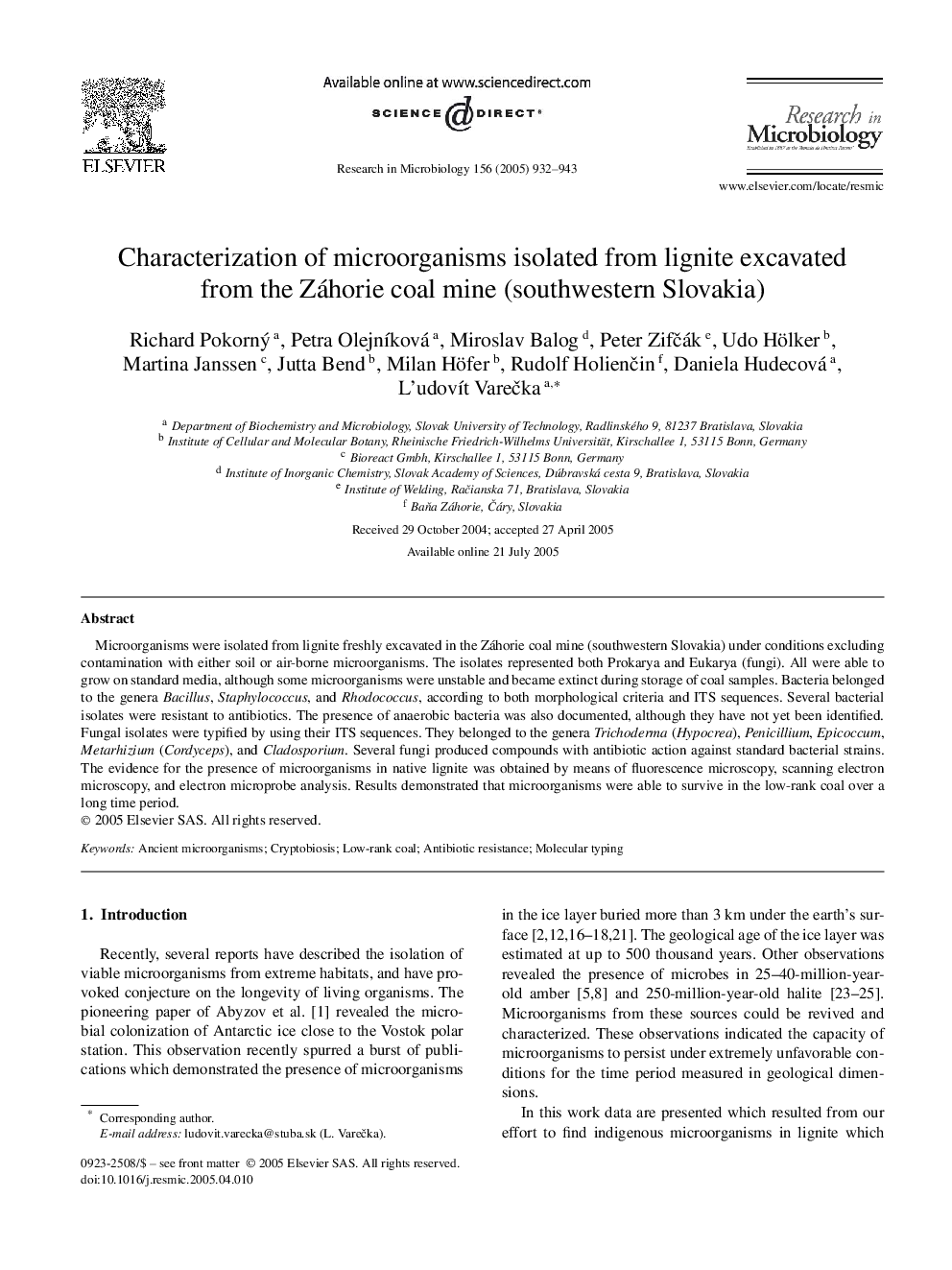| Article ID | Journal | Published Year | Pages | File Type |
|---|---|---|---|---|
| 9439850 | Research in Microbiology | 2005 | 12 Pages |
Abstract
Microorganisms were isolated from lignite freshly excavated in the Záhorie coal mine (southwestern Slovakia) under conditions excluding contamination with either soil or air-borne microorganisms. The isolates represented both Prokarya and Eukarya (fungi). All were able to grow on standard media, although some microorganisms were unstable and became extinct during storage of coal samples. Bacteria belonged to the genera Bacillus, Staphylococcus, and Rhodococcus, according to both morphological criteria and ITS sequences. Several bacterial isolates were resistant to antibiotics. The presence of anaerobic bacteria was also documented, although they have not yet been identified. Fungal isolates were typified by using their ITS sequences. They belonged to the genera Trichoderma (Hypocrea), Penicillium, Epicoccum, Metarhizium (Cordyceps), and Cladosporium. Several fungi produced compounds with antibiotic action against standard bacterial strains. The evidence for the presence of microorganisms in native lignite was obtained by means of fluorescence microscopy, scanning electron microscopy, and electron microprobe analysis. Results demonstrated that microorganisms were able to survive in the low-rank coal over a long time period.
Related Topics
Life Sciences
Immunology and Microbiology
Applied Microbiology and Biotechnology
Authors
Richard Pokorný, Petra OlejnÃková, Miroslav Balog, Peter ZifÄák, Udo Hölker, Martina Janssen, Jutta Bend, Milan Höfer, Rudolf HolienÄin, Daniela Hudecová, L'udovÃt VareÄka,
